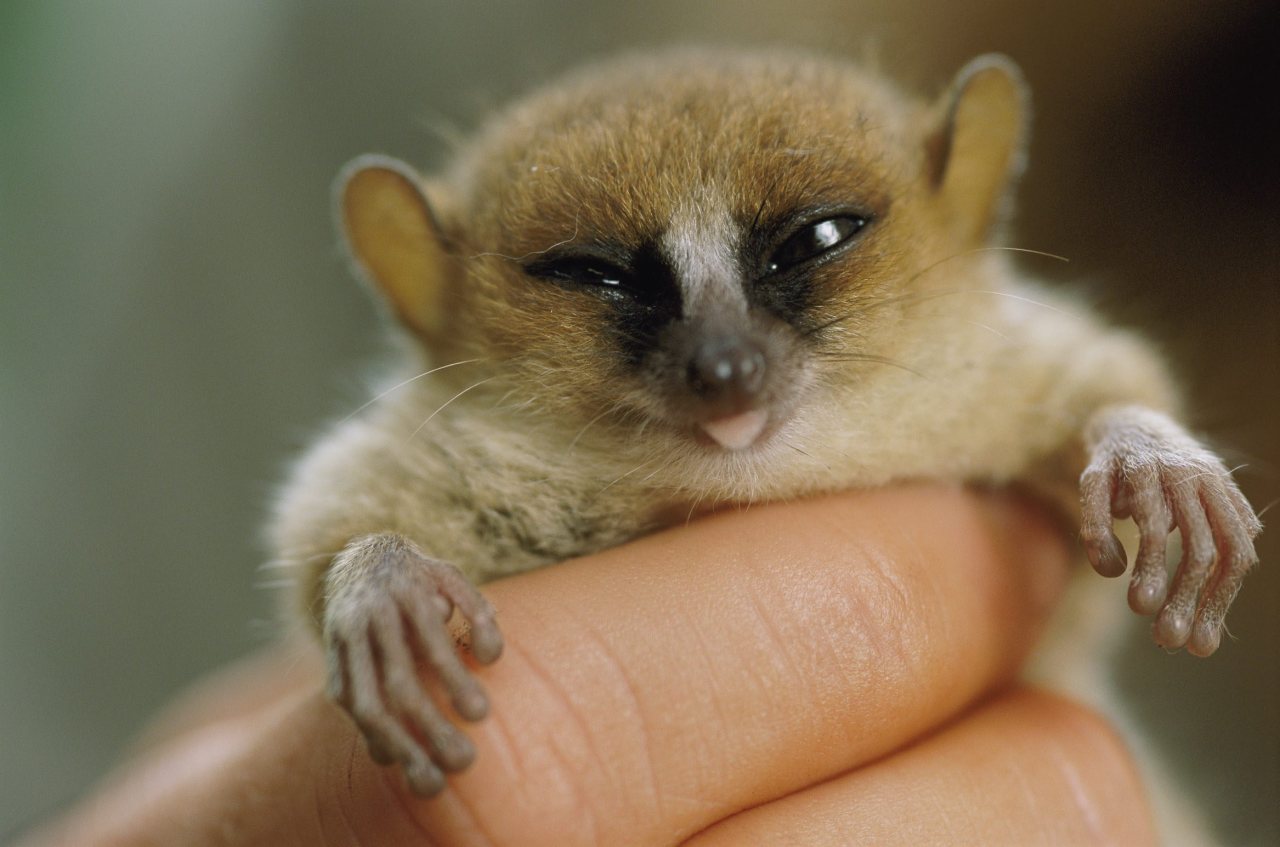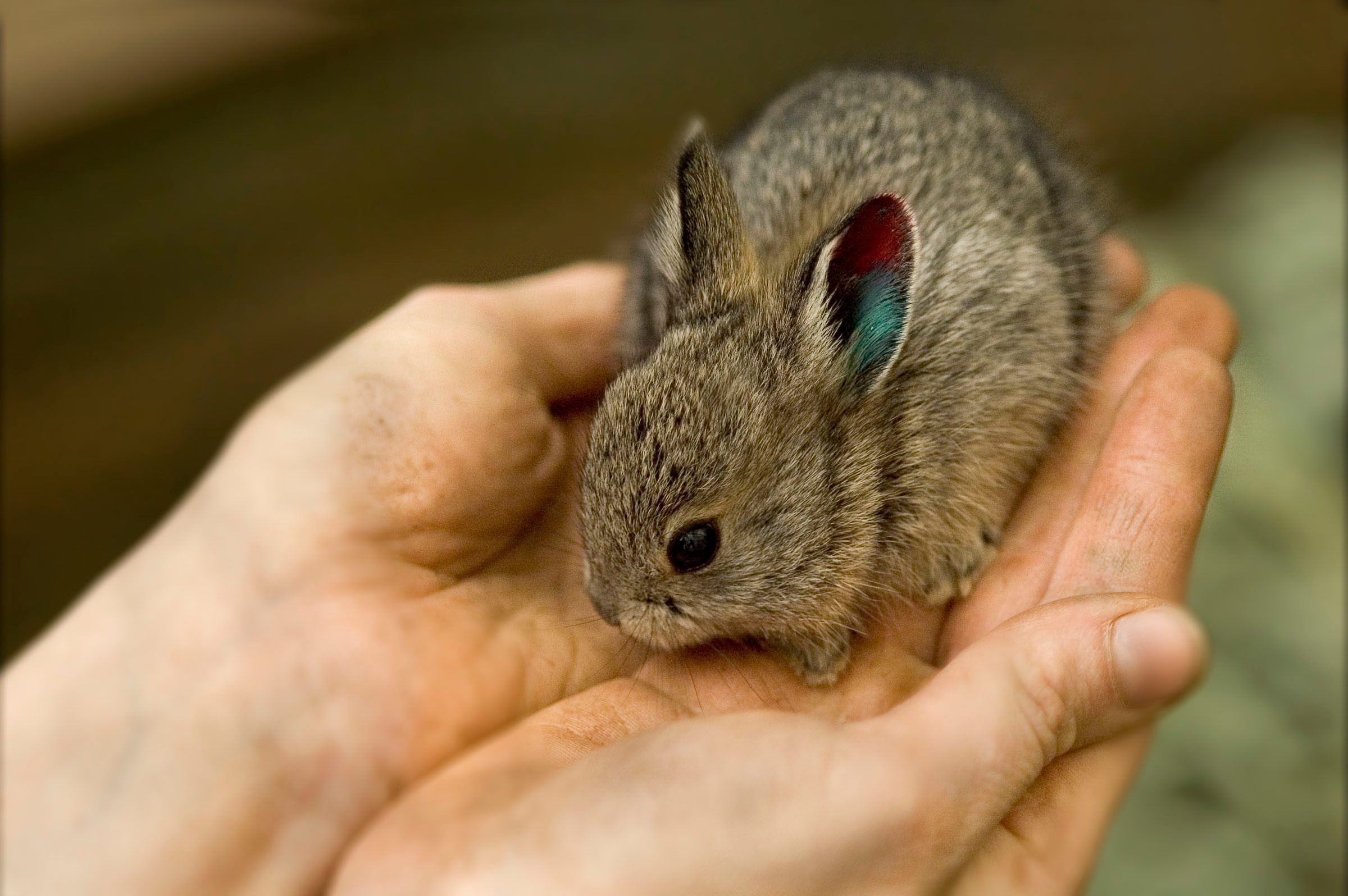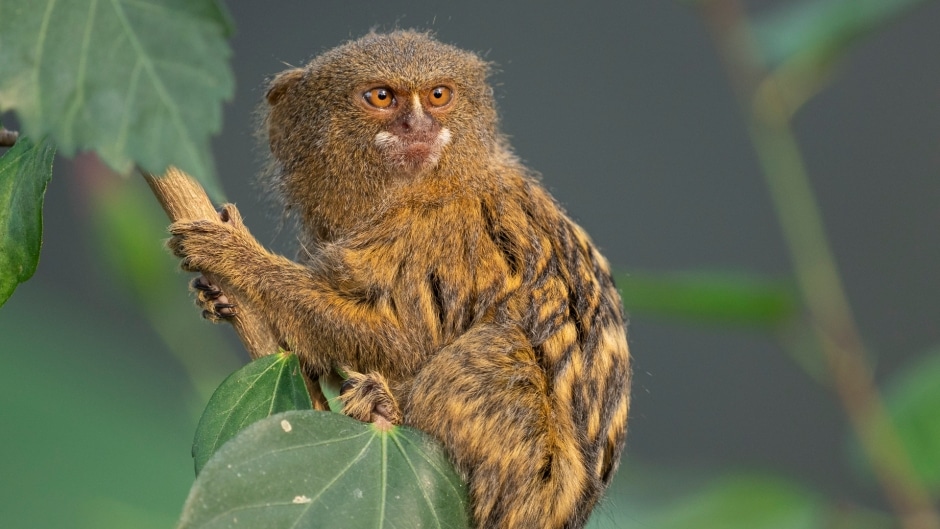Animals come in all shapes and sizes, from the incredibly large to the unbelievably small. While being big has its advantages, such as strength and dominance, being small also has its perks. Smaller animals require fewer resources to survive, can reproduce more often, and can easily hide from predators in tight spaces or hibernate during harsh conditions.
In this article, we will explore the top 10 smallest animals in the world, focusing on vertebrates that can be seen with the naked eye. This list includes a variety of fascinating creatures, from tiny rabbits to miniature reptiles and birds.
You are reading: Top 10 Worlds Smallest Animals
So, get ready to be amazed by the incredible diversity and ingenuity of these small wonders of the animal kingdom.

Top10 World’s Smallest Animals
Pygmy Rabbit

The Pygmy Rabbit (Brachylagus idahoensis) is a unique rabbit species native to the United States. It is the only native rabbit species in North America that digs its own burrow, setting it apart from other rabbits in the Lepus (hare) or Sylvilagus (cottontail) genera.
This small rabbit is the world’s smallest leporid, with adults weighing between 375 and 500 grams (0.827 and 1.102 lb) and having a body length between 23.5 and 29.5 centimeters (9.3 and 11.6 in). Females are slightly larger than males.
The Pygmy Rabbit is distinguishable by its small size, short ears, gray color, small hind legs, and lack of white fuzzy fur. It is closely tied to habitats dominated by big sagebrush and sagebrush-steppe, depending on these environments for food and shelter.
This rabbit species is found in areas with tall, dense sagebrush and will make burrows in relatively deep and loose soil near water.
The Columbia Basin pygmy rabbit population, one of the isolated populations of this species, is listed as an endangered species by the U.S. Fish and Wildlife Service. As of 2021, pygmy rabbits are known to occur in only two small areas in the Columbia Basin, both the result of reintroduction efforts.
These areas include the Sagebrush Flat area of southern Douglas County and Beezley Hills of northern Grant County. The Pygmy Rabbit is an Oregon Conservation Strategy Species in the Northern Basin and Range.
Pygmy Marmoset

The Pygmy Marmoset (Cebuella pygmaea) is a small New World monkey species native to the rainforests of the western Amazon Basin in South America. Here are some interesting facts about this tiny primate:
– The Pygmy Marmoset is the smallest monkey in the world, weighing just over 100 grams (3.5 oz) and measuring about 14 centimeters (5.5 in) in length.
– Pygmy Marmosets are highly social animals that live in groups of 2-15 individuals, consisting of a breeding pair and their young. They are active during cooler mornings and late afternoons and sleep huddled together at night.
– Pygmy Marmosets are omnivores that feed on a variety of foods, including gum or tree sap, nectar, fruit, leaves, and insects. Gum is their primary food source.
– The Pygmy Marmoset is threatened by habitat loss and the pet trade. It is classified as Vulnerable by the International Union for Conservation of Nature (IUCN).
– Pygmy Marmosets are unique among callitrichine primates in that no relationship exists between the number of adult males and the number of infants and offspring. However, a significant positive relationship exists between the number of juveniles and the number of adult and subadult group members.
Despite their small size, Pygmy Marmosets are fascinating animals with unique behaviors and adaptations that allow them to thrive in their rainforest habitat.
Madame Berthe’s Mouse Lemur
Madame Berthe’s Mouse Lemur (Microcebus berthae) is the smallest primate in the world, measuring only about 9.2 centimeters (3.6 inches) in length and weighing around 30 grams (1.1 ounces) . Here are some interesting facts about this tiny primate:
– Madame Berthe’s Mouse Lemur is native to the Kirindy Forest in Madagascar, where it uses the tangles of tree vines to sleep in.
– This species is an omnivore that feeds on fruits, flowers, insects, gum, arthropods, and small vertebrates like geckos and chameleons.
– Madame Berthe’s Mouse Lemur is a solitary, arboreal, and nocturnal animal that spends most of its time in trees.
– Compared to the sympatric gray mouse lemur, Madame Berthe’s Mouse Lemur eats mainly insects and fruit only occasionally.
– This species is threatened by habitat loss and fragmentation, as well as hunting for bushmeat and the pet trade. It is classified as Endangered by the International Union for Conservation of Nature (IUCN).
Despite its small size, Madame Berthe’s Mouse Lemur is a fascinating animal with unique adaptations that allow it to survive in its forest habitat.
Etruscan Shrew
The Etruscan Shrew (Suncus etruscus), also known as the Etruscan Pygmy Shrew or the White-toothed Pygmy Shrew, holds the title for being the smallest known extant mammal by mass, weighing only about 1.8 grams (0.063 ounces) on average. Here are some interesting facts about this tiny creature:
– Size and Appearance: The Etruscan Shrew has a body length of about 4 centimeters (1.6 inches), excluding the tail. It is characterized by its light brown and gray fur, long snout, slender body, and tail.
– Habitat and Distribution: These shrews prefer warm and damp climates and are widely distributed in Southern Europe, Northern Africa, and Southern Asia, including the Maltese islands in the Mediterranean Sea. They inhabit various environments, such as forest, shrub, grassland, rock crevices, vacated burrows, and under shrubs.
Read more : Discover The Top 4 Largest And Most Dangerous Snakes In Michigan
– Diet and Feeding: The Etruscan Shrew has a fast metabolism and eats about 1.5 to 2 times its own body weight per day. Its diet primarily consists of invertebrates, such as insects, larvae, earthworms, and the young of amphibians, lizards, and rodents.
– Behavior and Predators: These shrews are known for their very rapid movements and rely more on their sense of touch than their vision when hunting. They are active during the night and usually stay near their nests during the day. Birds of prey, especially owls, are the main predators of the Etruscan Shrew.
– Conservation Status: While the Etruscan Shrew is generally considered a least concern species, it can be rare or even endangered in certain locations due to habitat destruction and human activities.
Speckled Padloper Tortoise
The Speckled Padloper Tortoise (Chersobius signatus) is the smallest species of tortoise in the world, measuring only about 6-10 centimeters (2.4-3.9 inches) in length and weighing between 85 and 140 grams (3-5 ounces) . Here are some interesting facts about this tiny tortoise:
– Habitat and Distribution: The Speckled Padloper Tortoise is endemic to South Africa, where it is naturally restricted to a small area in Little Namaqualand, an arid region in the west of the country. It normally lives on rocky outcrops and forages among the rocks for the tiny succulent plants it eats.
– Appearance and Behavior: This tortoise species is characterized by its speckled brown and yellow shell, short legs, and small size. It is a solitary and terrestrial animal that is most active early in the morning and late in the afternoon. It is also known for its habit of making tiny pathways through vegetation, which gave it the name “padloper” (meaning “path-walker” in Afrikaans).
– Diet and Feeding: The Speckled Padloper Tortoise is an herbivore that feeds on a variety of succulent plants, such as the vygie (Mesembryanthemaceae) and the kruipvygie (Aizoaceae). It can survive long periods without water by obtaining moisture from its food.
– Conservation Status: The Speckled Padloper Tortoise is classified as Vulnerable by the International Union for Conservation of Nature (IUCN) due to habitat loss, overgrazing, and collection for the pet trade. It is protected by law in South Africa, and captive breeding programs have been established to help conserve the species.
Despite its small size, the Speckled Padloper Tortoise is a fascinating and unique animal that plays an important role in its ecosystem.
Bee Hummingbird
The Bee Hummingbird (Mellisuga helenae), also known as the zunzuncito or Helena hummingbird, is the world’s smallest bird, measuring only about 6 centimeters (2.4 inches) in length. Here are some fascinating facts about this tiny avian species:
– Habitat and Distribution: The Bee Hummingbird is native to the island of Cuba in the Caribbean and is found only in this region. It can be spotted in forest edges with dense vines and bromeliads, where it hovers near flowers.
– Appearance and Behavior: Female Bee Hummingbirds have a bluish-green color with a pale gray underside, while males have a reddish to pink head, chin, and throat during the mating season. The bird’s feathers have iridescent colors, which may not always be noticeable but depend on the viewing angle. It has a slender, pointed bill adapted for probing deep into flowers, and its wings beat 80 times per second during flight.
– Diet and Feeding: The Bee Hummingbird feeds mainly on nectar, using its rapid tongue movement to extract the nectar from flowers. In the process of feeding, the bird picks up pollen on its bill and head, contributing to plant reproduction as it transfers the pollen from flower to flower. In a single day, the Bee Hummingbird may visit up to 1,500 flowers.
– Conservation Status: While the Bee Hummingbird is not currently listed as a threatened species, its population is declining due to habitat loss and degradation. Protecting its natural habitat and raising awareness about its importance in pollination can help ensure the survival of this remarkable bird.
Monte Iberia Eleuth
The Monte Iberia Eleuth (Eleutherodactylus iberia), also known as the Monte Iberia dwarf frog, is a critically endangered species of eleutherodactylid frog that is endemic to the rainforest in a small part of easternmost Cuba. Here are some interesting facts about this tiny amphibian:
– Size and Appearance: The Monte Iberia Eleuth is the smallest frog in the Northern Hemisphere and the third smallest frog in the world, measuring only about 10 millimeters (0.4 inches) in snout-to-vent length. It has a brownish coloration with a slightly darker stripe down its back.
– Habitat and Distribution: This frog species is found only in the Monte Iberia region of eastern Cuba, where it inhabits the leaf litter and soil of the rainforest floor. It is critically endangered due to habitat loss and degradation, as well as the introduction of non-native species.
– Diet and Feeding: The Monte Iberia Eleuth is an insectivore that feeds on small arthropods, such as ants, beetles, and mites. It uses its long, sticky tongue to catch prey.
– Behavior and Reproduction: This frog species is active during the day and night and is known for its high-pitched calls, which are used to attract mates. Breeding occurs during the rainy season, and females lay their eggs in moist soil or leaf litter.
Read more : The Top 10 Coolest Animals In The World
– Conservation Status: The Monte Iberia Eleuth is classified as Critically Endangered by the International Union for Conservation of Nature (IUCN) due to its small population size and restricted range. Conservation efforts are underway to protect its habitat and prevent further population decline.
Despite its small size, the Monte Iberia Eleuth is a unique and fascinating species that plays an important role in its ecosystem.
Virgin Islands Dwarf Gecko
The Virgin Islands Dwarf Gecko (Sphaerodactylus parthenopion) is a species of gecko and one of the smallest terrestrial vertebrates in the world. Here are some interesting facts about this tiny reptile:
Appearance and Behavior:
– The Virgin Islands Dwarf Gecko has a brownish coloration with a slightly darker stripe down its back.
– It is completely endemic to the British Virgin Islands and has only been found on three of the islands: Virgin Gorda, Tortola, and Moskito Island.
– This species is a solitary animal that prefers moist microhabitats found under rocks because it lacks the adaptations necessary for preventing water loss, which is a significant problem due to its small body size.
– The Virgin Islands Dwarf Gecko is a small species that can fit on a penny.
Diet and Feeding:
– The Virgin Islands Dwarf Gecko feeds mainly on insects, such as ants and beetles.
– It uses its long, sticky tongue to catch prey.
Conservation Status:
– The Virgin Islands Dwarf Gecko is classified as a species of Least Concern by the International Union for Conservation of Nature (IUCN) .
– However, its population is threatened by habitat loss and degradation, as well as the introduction of non-native species.
Despite its small size, the Virgin Islands Dwarf Gecko is a unique and fascinating species that plays an important role in its ecosystem.
Kitti’s Hog-Nosed Bat
Kitti’s Hog-Nosed Bat (Craseonycteris thonglongyai), also known as the Bumblebee Bat, is the world’s smallest mammal by skull size and body mass. Here are some interesting facts about this tiny bat:
Appearance and Behavior:
– Kitti’s Hog-Nosed Bat weighs less than 3.2 grams and has a forearm length of 2.2 to 2.6 centimeters.
– It has a reddish-brown or grey coat, with a distinctive pig-like nose, large ears, and a short tail.
– This bat species is found only in a few limestone caves in western Thailand and southeast Myanmar.
– Kitti’s Hog-Nosed Bat is a nocturnal animal that feeds on small arthropods like beetles, flies, and spiders.
Conservation Status:
– Kitti’s Hog-Nosed Bat is classified as Near Threatened by the International Union for Conservation of Nature (IUCN) due to habitat loss and degradation, as well as disturbance from human activities.
– Conservation efforts are underway to protect its habitat and prevent further population decline.
Despite its small size, Kitti’s Hog-Nosed Bat is a unique and fascinating species that plays an important role in its ecosystem.
Paedophryne Amauensis
Paedophryne Amauensis is a species of microhylid frog that is endemic to eastern Papua New Guinea. It is considered the world’s smallest known vertebrate, with an average adult size of 7.7 millimeters (0.30 inches) in length. Here are some interesting facts about this tiny amphibian:
Appearance and Behavior:
– The Paedophryne Amauensis has a brownish coloration with a slightly darker stripe down its back.
– This frog species is nocturnal and lives on the floor of the forest.
– The Paedophryne Amauensis makes a sound similar to insects, which makes them difficult to detect.
– They can camouflage themselves against leaves on the forest floor.
– The Paedophryne Amauensis lives on land and does not go through a tadpole stage. They hatch as “hoppers” (miniature adults).
– Their skeleton is tiny, and they only have seven presacral vertebrae present.
– They are able to jump 30 times their body length.
– The Paedophryne Amauensis is crepuscular and eats small invertebrates.
– The males have a mating call, which is a series of high-pitched insect-sounding peeps.
Conservation Status:
– The Paedophryne Amauensis is classified as Near Threatened by the International Union for Conservation of Nature (IUCN) due to habitat loss and degradation, as well as disturbance from human activities.
– Conservation efforts are underway to protect its habitat and prevent further population decline.
Despite its small size, the Paedophryne Amauensis is a unique and fascinating species that plays an important role in its ecosystem.
FAQS
1. What is the smallest mammal in the world?
The smallest mammal in the world is the Kitti’s hog-nosed bat, also known as the bumblebee bat. It grows to be only around 3 centimeters long.
2. What is the smallest bird in the world?
The world’s smallest bird is the bee hummingbird, weighing only around 1.6 grams.
3. What is the smallest reptile in the world?
The world’s smallest reptile is the Virgin Islands dwarf gecko, measuring 0.7 inches.
4. What is the smallest fish in the world?
The world’s smallest fish is the Paedocypris, measuring only 0.3 inches.
5. What is the smallest frog in the world?
The smallest frog in the world is the Monte Iberia eleuth, measuring just 0.4 inches.
6. What is the smallest snake in the world?
The world’s smallest snake is the slender blind snake, measuring only 4 inches.
7. What is the smallest shark in the world?
The world’s smallest shark is the dwarf lantern shark, measuring only 8 inches.
8. What is the smallest rabbit in the world?
The smallest rabbit in the world is the pygmy rabbit, measuring only 9.4 inches.
9. What is the smallest primate in the world?
The smallest primate in the world is the pygmy mouse lemur, measuring only 2.25 inches.
10. What is the smallest seahorse in the world?
The world’s smallest seahorse is the pygmy seahorse, measuring only 0.6 inches.
Source: https://petstutorial.com
Category: Animals










